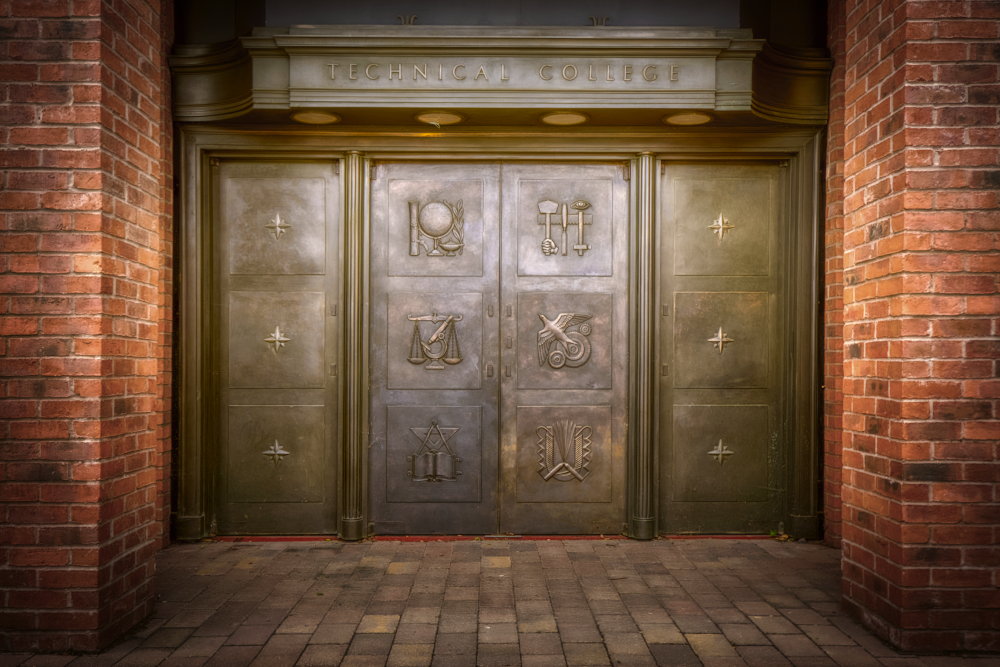Loading Images
Please bear with us...
Information
Greyfriars is today a ruined shell of the church of a former Franciscan friary located behind Eastgate Shopping Centre, to the east of St. Mary de Crypt. The friary was founded around 1231, seven years after the first Franciscan mission to Britain, in the south-east corner of Gloucester's then still walled Roman perimeter. Over the following decades a church was joined by other buildings, and the friary estate expanded to the east and south walls lining what would become today's Brunswick Road and Parliament Street. The area to the north of the friary church, today open space between ruin and shopping centre, was the site of the monastic cemetery.
The original church was rebuilt around 1519, and at the Dissolution of the Monasteries nineteen years later the friary was described as "...a goodly house much of it new builded specially the church, choir and dorter; the rest small lodgings; divers leases out for years of lodgings and gardens..." After the friary's seizure by the Crown, all buildings but the church were demolished, possibly as early as 1542. A map of 1610 shows only the church still standing, comprising the nave and north aisle that can still be seen today, albeit in ruinous form.
The church was leased to local grandees, and a brewery that lasted until the 18th century was established in it. During the siege of Gloucester in 1643 the main Royalist effort was concentrated against the south-east corner, and Greyfriars, part of which served as the headquarters of Parliamentarian commander Colonel Massie, suffered considerable damage.
In the early 18th century a bowling green was laid out to the south east of the church (below where today's bowling green now lies). A dwelling known as Bowling Green House built west of the green in 1747 had been rebuilt as a mansion by 1790, and by 1770 the church had been converted into several private dwellings.
In the early 19th century the church was bookended by two large newly built houses, Greyfriars House occupying the westernmost two bays of the church's seven bays (as it still does today), and what was later known as Suffolk House a short distance from the church's eastern end. From 1831 the church was occupied by business premises, including a dispensary and lodging house. Between 1852 and 1876 a schoolroom was registered for public worship at Greyfriars, and an 1852 Board of Health map marks the remainder of the north aisle as Abbots Hall School.
In 1860, the two terraces of Priory Place joined the early 19th-century Priory House to replace an 18th century property that was aligned with the friary's west cloister. Priory House and nos. 5–8, the terracing on the western side of Priory Place, both survive.
By the latter half of the 19th century the area east and south of Bowling Green House was laid out as a park, and in 1888 the house, then known as Friars Orchard, was acquired by Crypt School. Another school building was constructed a short distance from the south-western end of Priory Place.
In 1864 the lawyer T.F. Addison built a tower in the garden of a house on Bell Lane as a memorial to Robert Raikes, the Gloucester-born Sunday School pioneer. Most of the house was bulldozed in the 1960s construction of Eastgate Shopping Centre, but a wing and the tower, built with material recycled from Greyfriars and now known as Addison's Folly, still stand on the edge of former friary land.

Gates to the old GlosCAT building saved and re-used in the new Friars Orchard development
Between 1938 and 1941 the south-eastern area of the old friary, along Brunswick Road and Parliament Street, was developed into the Technical College (later GlosCAT), the subsequent extension of which resulted in the demolition of the Crypt School buildings. Around the end of the Second World War the former church was severely damaged by fire, which destroyed all but two of the fourteen bays of medieva timber roof.
In the 1960s Suffolk House was demolished preparatory to the construction of the Eastgate Shopping Centre market hall. In 1966 the government Ministry of Public Buildings and Works began the restoration of the church. Post-dissolution alterations were cleared and the last surviving two bays of medieval roof, now in poor condition, were removed. The floor was lowered to the level it was in 1538 and the ruins consolidated into the shell they remain today. In 2013 work began on the redevelopment of the GlosCAT properties into the residential apartment blocks that now occupy former friary land.